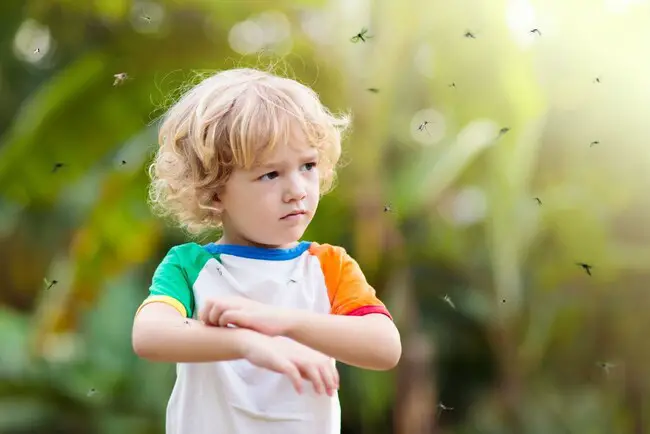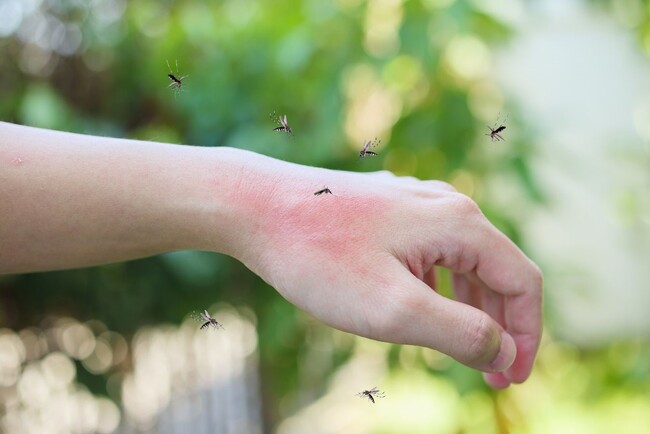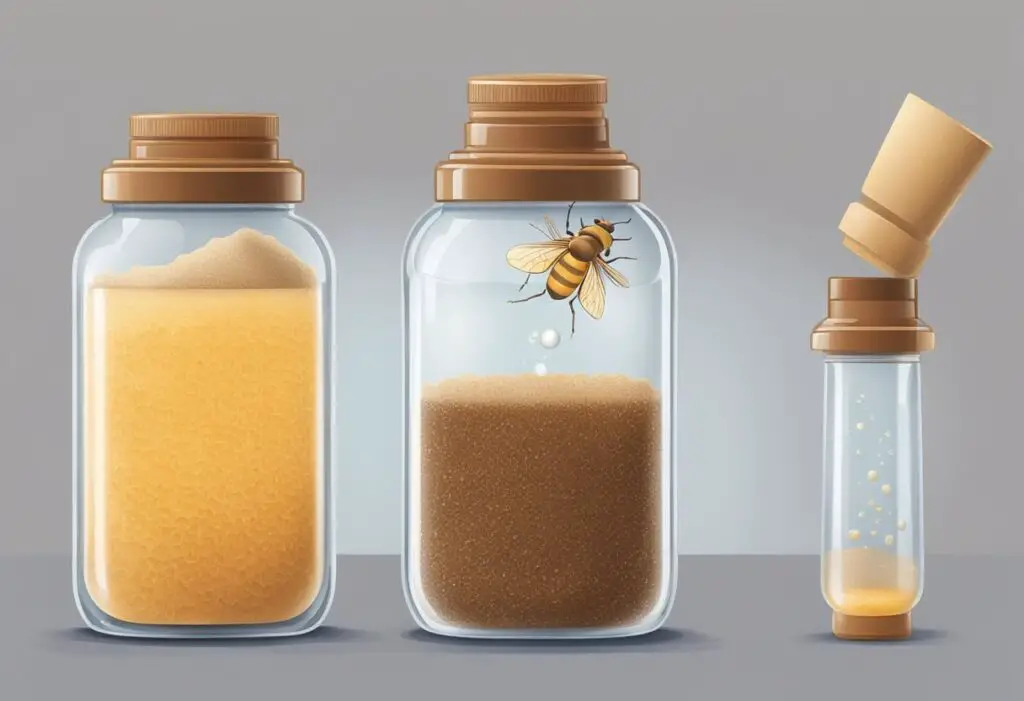With the warmer months approaching, it’s time to prepare for the inevitable invasion of mosquitoes. It may be challenging to enjoy outdoor activities or even relax in your own backyard when these pesky insects are buzzing around. One way to deter these unwelcome guests is by making a DIY mosquito trap, which can also serve as an eco-friendly alternative to commercial repellents and insecticides.
| Material/Tool | Description |
|---|---|
| Bottle or Container | Any plastic bottle that can hold about 2 liters or a glass jar/container with a wide opening. |
| Cutting Tools | A sharp knife, a pair of scissors, or a box cutter. |
| Sugar | 1 cup of granulated sugar (For bait preparation: 1/4 cup brown sugar) |
| Yeast | 1 tablespoon of active dry yeast |
| Water | 1/4 cup of warm water (not hot) (For bait preparation: 1 cup boiling water) |
| Black Construction Paper | Used to wrap around the bottle. |
| Clear Packing Tape | Used to secure the top and bottom parts of the bottle together and to attach the construction paper. |
So, get ready to arm yourself with some basic tools and household items as we walk you through step-by-step instructions on constructing your very own mosquito trap. Let’s tackle this bothersome issue with ingenuity and a touch of creativity!
Understanding Mosquito Attraction

Mosquitoes are not just annoying but can also carry and transmit various diseases. Understanding how they are attracted to humans can help in being better prepared to avoid bites and reduce their populations with effective trapping techniques.
Carbon Dioxide and Heat
Mosquitoes primarily rely on their sense of smell to locate their prey. They are attracted to carbon dioxide (CO2) released by humans and animals when they breathe. This is why mosquitoes are often found buzzing around people even in the dark.
Exhaled CO2 acts as an invitation to mosquitoes, indicating the presence of a potential meal.
In addition to CO2, mosquitoes also find their target by sensing the heat emitted by warm-blooded creatures. Our body heat helps mosquitoes to pinpoint their target and decide where to bite.
Dark Clothing and Movement
Visual cues also play a role in attracting mosquitoes. These insects are more drawn to individuals wearing dark clothing as they can see these colors more easily than lighter shades.
Moreover, mosquitoes can detect movement. So, if you’re moving around, you’re more likely to be noticed compared to someone sitting still. In summary, opt for lighter clothes and minimize movement to reduce your chances of being a mosquito target.
Body Odors and Skin Bacteria
Human skin produces a variety of natural scents that can attract mosquitoes. These scents are emitted from various compounds released by our body such as lactic acid, uric acid, and ammonia. Sweat can also amplify the odors, making it more enticing for mosquitoes.
Furthermore, many factors contribute to our specific body odor, including the specific types of skin bacteria present on our body. Research has shown that some skin bacteria produce compounds that attract mosquitoes, while others can actually repel them.
Remember that different people have unique body chemistry, which makes some individuals more attractive to mosquitoes than others. To reduce the likelihood of mosquito bites, use repellent, wear light-colored clothes, and minimize movement in mosquito-infested areas.
What about Light Color Attraction for Mosquito’s?
Simply put, light does not play a big roll with attracting mosquitoes. It has been researched that blue and green LED light along with the things above that attract the buggers (mosquitoes) show some more attractant over any other color in the light spectrum. Read more about it here: Patio Light Colors That Don’t Attract Bugs
Materials and Tools
In this section, we will discuss the materials and tools needed to create a DIY mosquito trap. We’ll cover three main components: the bottle or container, cutting tools, and the sugar and yeast mixture.

Bottle or Container
Any plastic bottle that can hold about 2 liters will work for this trap. Alternatively, a glass jar or container with a wide opening will also do the job. Make sure your chosen container is clean and doesn’t contain any leftover traces of their previous contents. The size of the container is important because it determines the amount of sugar and yeast mixture that can be added, ultimately impacting the effectiveness of the trap.
Cutting Tools
To create the mosquito trap, you’ll need a sharp cutting tool such as a knife, a pair of scissors, or a box cutter. These tools will be used to carefully cut the top portion of the bottle or container, which will then be inverted and inserted into the bottom portion to create a funnel for mosquitoes to enter. It’s important to cut the bottle or container smoothly to prevent any jagged edges that could harm the user when handling the trap.
Sugar and Yeast Mixture
The sugar and yeast mixture serves as the primary bait to attract mosquitoes to the trap. The ideal ratio of sugar to yeast is:
- 1 tablespoon of active dry yeast
- 1/4 cup of warm water (not hot)
- 1 cup of granulated sugar
Mix the sugar and yeast in warm water, making sure to stir well to avoid any clumping. The mixture should dissolve evenly, creating a smooth, syrupy texture.
Once you have all of the materials and tools gathered, follow these simple steps to create your DIY mosquito trap:
- Cut the top portion off the bottle or container, using your chosen cutting tool.
- Mix the sugar and yeast mixture in a separate container and pour it into the bottom portion of the bottle.
- Invert the top portion of the bottle and insert it into the bottom portion, forming a funnel.
- Cover the trap with a piece of black fabric or construction paper, as mosquitoes are attracted to dark, damp spaces.
- Place the trap in an area where mosquitoes are most prevalent.
Remember to regularly check the trap and replace the sugar and yeast mixture as needed. With these simple materials and tools, you’ll be on your way to enjoying a mosquito-free environment!
Step-by-Step Construction

Cutting and Assembling
To start constructing your DIY mosquito trap, gather the following materials:
- A plastic bottle (2-liter works best)
- A sharp knife or scissors
- Clear packing tape
- Black construction paper
First, carefully cut the top third of the plastic bottle. The edge should be straight and smooth for the best results. Next, flip the top part upside down (with the cap still on) and insert it into the bottom half of the bottle. Secure the two pieces together using clear packing tape, ensuring there are no gaps for mosquitoes to escape. Then, wrap the black construction paper around the bottle and secure with more packing tape.
Bait Preparation
To prepare the mosquito bait, you’ll need:
- 1/4 cup brown sugar
- 1 cup boiling water
- 1 packet dry active yeast
Begin by dissolving the brown sugar in the boiling water. Allow this mixture to cool to around 90 degrees Fahrenheit. Once cooled, add the packet of dry active yeast to the sugar water mixture, without stirring. The yeast will produce carbon dioxide, which attracts mosquitoes.
Placement and Maintenance
Pour the bait mixture into the bottom half of the bottle, ensuring the liquid level stays below the entrance of the inverted top part. Now, your DIY mosquito trap is ready for placement!
Choose a spot in your yard or outdoor area that has a history of mosquito activity. Place the trap on a flat surface, like a table or the ground. Check and replace the bait mixture every 1-2 weeks, or when the liquid appears cloudy or has a strong odor. Additionally, it’s essential to remove any trapped mosquitoes from the bottle and wipe it clean before adding fresh bait.
For optimal effects, utilize multiple traps around your outdoor space to cover larger areas and reduce the mosquito population effectively.


